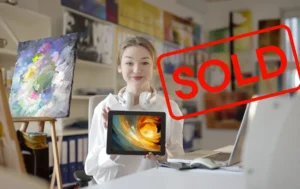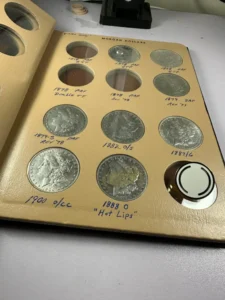So you’ve finally decided to level up your creative game and dive into art licensing. Awesome move! Passive income, global exposure, and getting your art on mugs, notebooks, and t-shirts? Yes, please.
But wait—before you start imagining your art in Target or Anthropologie, let’s pump the brakes.
Because many beginner artists dive into licensing with loads of talent, but zero strategy. And that can lead to messy contracts, missed payments, or even (yikes) lost rights to your work.
This blog post covers 10 common mistakes new artists make when licensing art, and most importantly, how to avoid them. Whether you’re into illustrations, pattern design, or cute digital characters, this guide is for you.
Let’s go!
1. Not Understanding What Licensing Is
“I signed a thing, now my art is on a beach towel and I don’t know if I get paid?”
Too many artists hear “royalties” and jump in without knowing the basics.
The Fix:
Know that licensing means you permit a company to use your artwork on their products.
You don’t sell the art—you license the right to use it.
Make sure you retain ownership unless you’re doing a full buyout (which comes at a premium!).
Pro Tip: Licensing = renting your art, not selling it forever.
2. Working Without a Contract
Even if you’re dealing with a friendly small business owner, don’t rely on DMs and good vibes.
The Fix: Always. Use A. Contract.
Include details like:
Royalty percentage or flat fee
Usage rights (what products, where, and how long)
Payment schedule
Termination clauses
3. Saying Yes to Exclusive Rights Too Quickly
Brands love exclusivity. But if you say yes too fast, you might block yourself from earning elsewhere.
The Fix: Start with non-exclusive deals so you can license the same design to multiple clients.
Only agree to exclusivity if:
You’re being fairly compensated
It makes strategic sense
It’s for a limited time and specific territory
Real Talk: Your art can be in 5 stores, not just one.
4. Licensing Incomplete or Low-Res Files
You can’t license screenshots or low-quality images.
The Fix: Submit files that are:
High resolution (300 DPI)
Print-ready (CMYK format for physical products)
Layered if requested (like PSD or AI files)
Bonus: Learn to name your files. No one wants to download “finalFINALrealone2.jpg”
5. Not Building a Licensing-Ready Portfolio
If your art is scattered across ten platforms, or your IG is just food pics and selfies, brands won’t take you seriously.
The Fix:
Create a professional-looking portfolio (on Behance, Adobe Portfolio, or your own website)
Organize by category: florals, animals, seasonal, typography, etc.
Include mockups to show how your art looks on real products
6. Ignoring Market Trends
Your art might be gorgeous, but if it’s not what brands are looking for, it won’t sell.
The Fix: Research current trends in:
Stationery
Home decor
Apparel
Packaging
Follow trend reports (like WGSN, Pinterest Predicts, or Spoonflower trends).
But stay true to your style. Trends guide, not define.
7. Setting Unrealistic Royalty Expectations
New artists sometimes ask for sky-high royalty rates without understanding industry norms.
The Fix:
Standard royalty rates are around 5% to 10% of the wholesale price
Flat fees might range from $250 to $2,500, depending on usage
Big money comes with volume or top-tier brands
Don’t underprice yourself, but stay grounded.
8. Forgetting to Track Your Work
Once your art is licensed, it’s out in the world. But without a system, you’ll lose track of:
Who has what rights
When contracts expire
When payments are due
The Fix: Use spreadsheets, Notion, or Trello to track:
Artwork names
Licensees
Terms & expiration dates
Payment history
Admin is boring, but royalties are fun.
9. Not Marketing Yourself
Creating amazing art is only half the game. If no one knows you exist, your designs won’t get picked.
The Fix: Get active on platforms like:
Instagram (behind-the-scenes and product mockups)
Pinterest (huge for surface design)
LinkedIn (for connecting with art directors)
Join licensing directories or marketplaces (e.g., ArtLicensingShow.com)
Visibility = opportunity.
10. Ignoring Legal & Ethical Issues
Copying trendy designs or using cultural symbols without understanding their meaning? Huge no-no.
The Fix:
Never copy existing designs. Create original work.
If using cultural inspiration, do the research or collaborate with artists from that background.
Register your work with copyright offices for added protection
Ethics > trends. Always.
Bonus Tips: Licensing Like a Pro
Watermark preview images to avoid theft
Keep learning via courses like those on Skillshare or Make Art That Sells (MATS)
Always have a clear brand identity
Practice pitching your work with confidence
Remember: You’re not “just” an artist—you’re a creative entrepreneur.
Final Thoughts: Mistakes Are Normal, Growth Is Optional
Making mistakes when starting out is totally normal. But now you have the inside scoop to dodge the big ones and license like a seasoned pro.
Art licensing is a long game. It takes:
Strategy
Patience
Professionalism
…and of course, killer artwork
So keep creating. Keep learning. And don’t be afraid to ask for what your art is worth.
Because licensing isn’t just about making money—it’s about giving your creativity a life of its own.






